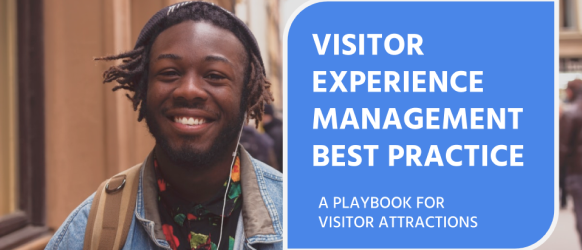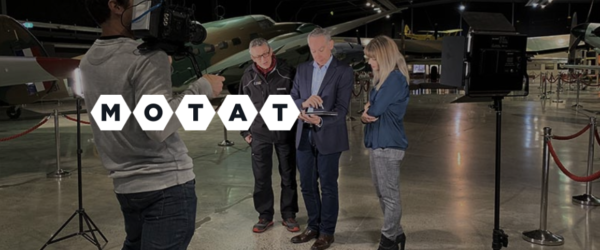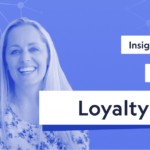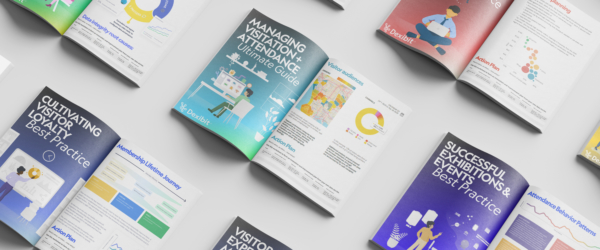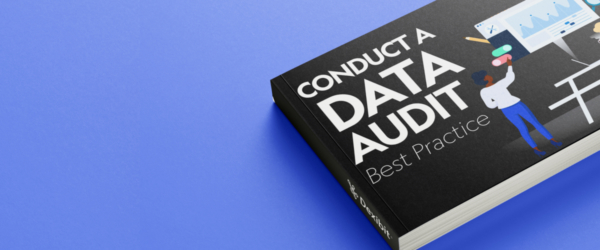Connecting exhibitions and experiences through visitor services at Auckland Museum
- Posted on
David Lew, Visitor Services Solutions Manager at Auckland Museum Tamaki Paenga Hira talks about how to connect exhibitions with visitor experience through the power of visitor services, including with He Kōrahi Māori, the Māori dimension (the indigenous people of Aotearoa, New Zealand).
Show notes
David refers to several words in Te Reo Māori, the indigenous language of Aotearoa, New Zealand:
– Marae, Māori meeting grounds
– Iwi, tribe
– Pōwhiri, welcome ceremony
– Mana whenua, customary authority exercised by an iwi (tribe)
– Mahi toi, art or art work
– Kaitiaki, guardianship of the sky, sea and land
– Tanoa (Pacific), a large wooden bowl for kava ceremonies
Watch for more on Te Ao Mārama (the South Atrium) that David discusses in this episode.
Transcript
Angie: Hello and welcome to the data diaries. I’m Angie judge from Dexibit. And here with us today we have David Lew, Visitor Services Solutions Manager at Auckland War Memorial Museum. Welcome David!
David: Thank you for having me.
Angie: Thanks for being here. And David, you’re joining us from your ‘bubble’ at home… because we’ve ended up, as we speak here in September 21, in yet another lockdown this pandemic after a local outbreak. That was a bit of a plot twist!
David: Absolutely! Yeah, I think now that we’ve had so many of these lockdowns, so the kids are kind of used to it and maybe even relieved that they don’t have to get up early.
Angie: Anyhow today, we’re going to talk all about exhibitions and visitor experiences and other activities as part of the public program.
So this is a conversation that I’ve been really looking forward to. Shall we start at the very beginning? David, can you shed some light for me… what exactly is a visitor services solutions manager?
David: Yeah, well, it’s an interesting role and it’s something I feel like I’m regularly learning more about this. So visitor services solutions manager, very generally, I support everything that our visitor services team does onsite. We have about 50 people that work as visitor hosts. We have another couple of people that work as bookings and sales coordinators on phones. And we have a leadership team that works along with all of these people as well. And so it’s my job to try to support everyone, identify opportunities for solutions and maybe new technical products, that kind of thing, anything that might help our team deliver better customer service, but it is an interesting role.
So originally I came on as the development manager, kind of the learning and development role for the team. I would do training analysis and instructional design and facilitate and coordinate all the training. Kind of a one-person training team. And when I first started about two years ago, one of the first problems that I identified was that the team felt really disconnected from a lot of the other teams around the museum.
So a lot of my work for the last couple of years has been almost like an internal relationship manager. I’ll go and meet the other teams and learn about what they do and how they can benefit from greater involvement with our visitor services. Often that’s making sure that we’re able to give insight into how different things will be, maybe how the visitors will impact or be impacted by the decisions that have been made in exhibition spaces… you know, where people are likely to be gathering and eating and which things need to be placed higher so that children can’t grab it and pull it down. Those types of insights that maybe don’t always come until you’ve had some advice from people that are out on the floor working with all the visitors. It’s a really cool way of working back with the rest of the museum team.
Angie: Cause I know it can otherwise sometimes be a bit of an after thought?
David: Yeah. Well, that’s definitely one of the struggles that happens too often. One of the things I’ve learned is that it’s not uncommon for people to have maybe almost like, a purist view, or an intention about an exhibition. You’ve got this idea that we’re going to express all these concepts or convey all this. And in your mind as the designer of that exhibition or that space, you might think that everyone’s going to naturally go to the right and they’re going to follow this path and they’re going to read all these things and they’re going to have this experience.
And then when you add that perspective of learning about what visitors actually do when they come to these spaces, we can quite quickly say, ‘oh no, no one’s going to read that. Everyone’s going to walk over here and they’re all going to sit down and all these kids are gonna cluster up at this table and they’re all going to line up to do this thing’. Just with a little bit of a perspective we can help to correct some of those initial intentions and make sure that it’s a good visitor experience for everybody there.
Angie: I imagine that might be a line used frequently of ‘no one’s going to read that’.
David: Just in balance. So isn’t there cause it might be that we’ll have that perspective of ‘that’s going to get very little use’ or ‘no one’s going to read that label there’ and then you might still have that handful of people that do get a really meaningful exercise out of reading that one label and then it’s like, well, maybe it was worth it.
Angie: My husband is one of those people, him and I can not visit a museum simultaneously.
David: Does he read everything?
Angie: Oh yes. Every single word, every single exhibition, every single museum.
I understand you’ve come into the role from a background in nonprofit and government. What motivated you originally coming into the museum?
David: Yeah, well, so my background’s been training design and community development. I spent several years coordinating and facilitating a youth program in New Zealand and Australia in Papa New Guinea. And that was all about helping young people make good decisions and contribute to their neighborhoods.
And then I spent several years in my career and often that has been about mental health. I don’t know for whatever reason, that’s been the path that I’ve been on. So I’ve worked with some mental health providers and support lines in particular. And that’s been very interesting, very eye-opening. And I admire all the people that can do that with their careers and quite a good experience, very eye-opening in terms of what people are dealing with in terms of their mental health around the country and the ways that people support. And then I worked for Auckland Council for a bit as an instructional designer there with the customer services team.
When the opportunity came up to work at the museum, it just felt too appealing a prospect to turn down, I really wanted to grab the job. I mean, part of it is just that it’s so cool to work inside of the museum and to be around that environment. I guess for me, it wasn’t so much a challenge switching from social enterprises and not-for-profits and coming into a museum. I mean, it all kind of felt like it aligned to me. It’s all learning, it’s all improvement. It’s all helping the community to understand its history and the contemporary application of that history as well. It’s all fascinating to me. I also really enjoy the fact that because it’s a museum that does not only natural science exhibition and content and history and culture. And it means that I get to constantly learn from everyone and everything that’s going on in the building as well. So I really enjoy that aspect of working.
Angie: And you’ve come into the museum in the middle of its five-year strategic plan, which is currently in the transform phase. And as part of this, I see the museum has recently completed a really stunning refurbishment of its south atrium ‘Te Ao Mārama’, which itself has sort of reconceptualized the feeling of visiting the museum with such a huge project, including big transformation of where special exhibitions are hosted, a lot of changes to retail and hospitality around that experience of that whole area, especially when a big exhibition is on… what went into the thinking behind that? And what have you seen as a result?
David: So the museum itself is about, what, a hundred years old now. In 1929, this particular site opened up and the building at the time was very much the war memorial. That’s the Northern entrance with the great columns, European styles of architecture. Then around in the 1960s the Southern entrance in the semicircle was built there. At first, from my understanding, at the time, that was mainly meant to be offices and a staff entrance. What we now know as the atrium was just an open courtyard. Over the decades, after that, eventually it became covered up and it became a public entrance. You would walk in that Southern entrance and immediately hit an information desk. There was a smaller exhibition space behind it, then you would end up on the flanks of that, the atrium and entry entering into the museum.
What we’ve done with the Te Ao Mārama space is we’ve really indigenized that entrance experience. So now when you watch people walk in, there’s a couple of gates Mahi Toi (art works), which have some Kaitiaki (guardianship), guardians protecting the space there. That’s the first thing you see as you come in through that entrance. About the same time, you’ll be able to hear voices of the mana whenua (customary authority) of the local iwi (tribe) singing the songs about their arrival into Auckland. And so you’re going through steps that parallel a pōwhiri (welcoming) process when, when you’re visiting local Marae (meeting grounds) of local iwi in New Zealand, this is the process that you go through, you’re greeted and welcomed.
Once you’re through the gates and you’re listening to these songs and there’s a visualization of these different tribes as they entered the Auckland Harbor as well. And you’re underneath a giant, kava bowl, the Tanua that we have, it’s above you and it’s this massive circular shape it’s above you as you enter.
And you see people just kind of hit with that sense of awe when they’re walking in the space for the first time. And the whole kava bowl is supported by the legs of the bowl, which are also the elevator shafts in the building. And the they’re decorated with manuloa, which are this bright red pattern that’s made to look like birds. And it’s also a reminiscent of the lashings that would be used to fix ships together, on these voyages. And so what you’re getting from all of these different things, the symbolism of the space and the entryway and the kava bowl, this is all telling the story about arrival into New Zealand, arrival into Auckland and connections into the past of human voyages and expeditions across the Pacific. It’s this really powerful experience that we get to welcome visitors with as they come through that Southern entrance.
Angie: So beautiful as well to symbolize the role of Auckland as well and this heart of the Pacific being in many ways, the capital of the Pacific and the different peoples that have arrived into the city. It’s amazing to see that represented through the museum’s physical building.
David: Underneath the Tanua there’s this projection that’s going on as well. It’s again telling these stories of arrival and talking with some of the exhibitions team, I remember when we first opened up in December and we were able to invite the public in to see what had come, I guess the fruits of the labor. So there’s one projection on the back wall, showing boats and these different stories of arrival and it’s kind of a seascape. And then on the floor underneath, is a different variety of images. So then we have things like, stingrays swimming around, and fish, boats. And what was really heartening was to see how children in particular will respond to this projection. This is simply a flat projection on the floor, but kids will jump on it and they’re crawling around and they ‘stand’ in the boat and they wait excitedly for the next projection to show. It’s really quite lovely, very encouraging.
Angie: I think there’s no age barrier for that as well, I saw a six month old baby having the time of its life the other day on that projection, simply because it was so accessible on the floor.
So I’m really curious about this one because the museum does such a spectacular job and has put so much emphasis and energy into it as well with a refurbishment. How do you incorporate Te Reo, our indigenous language and tikanga, our cultural practices into the visitor experience around these various exhibitions and the building itself?
David: As a museum, we promote a value that we call He Korahi Māori, which means the Maori dimension. And so we have individuals and teams around the museum dedicated to ensuring that everything that we’re doing is done with that Māori perspective as well. So in addition to our teams that focus on He Korahi Māori within the museum, our museum board also has a trustee board that we call Taumata-ā-Iwi and they act as representatives for the different Māori tribes around Auckland. So those tribes have decided on which people should be part of that board.
And then that board advisors the museum board. And so that’s for anything that might be to do with any indigenous history. We also have people that will do supporting literature. We try to make sure that everything we’re doing is done in a considered and deliberate approach. We don’t want to offend anyone, but more importantly than that, we need to make sure that we’re representing stories correctly. That we’re really providing that honoring way to tell these stories and to make sure that we’re doing things accurately with our visitor services team. One of the first courses that we go through in our team is to talk about the value of Manakitanga. Sometimes it’s translated as simply, hospitality, and I think that it doesn’t tell the whole story. The idea of Manakitanga is that it’s the actions that are giving Mana (energy and power) to others. And mana can be translated like, honor, or, maybe even, the respect or the status that a person has, depending on their manner.
So when we talk about Manakitanga, we’re talking about the need to make sure that our visitor hosts are treating people in a way that gives each of those visitors this mana, and in the context of a museum, that mana is shown by welcoming these visitors into not only your home or your workplace, but you’re also welcoming them into the lives and the stories of all the people that we represent in the museum.
So in my understanding of Māori tikanga and the way that you would do things the right way and Māori culture, every object or artifact that we have in the building, that obviously it was created by someone, someone used it for their lifetime and someone donated it. And so there’s, for any particular artifact, there might be dozens of people or scores of people that interacted with this item before it got to being in the museum case and being on display.
And so Manakitanga for the visitor services team means how are we going to make sure about all of these scores of people and the stories that led up to this day. And it’s not necessarily that we have that whole history of it, but more about that approach and making sure that everyone feels that almost that sense of reverence or awe as you’re looking into the history of these things.
And so that’s why from that indigenous perspective, it’s so much more than, ‘here’s a tool that someone used centuries ago’ or ‘here’s an item that we know was a weapon’. But it really is much more about considering the fact that this is something that was treasured. It’s still close to a lot of people. The identity of my ancestors for instance, might be attached to this item. And it’s important for me to treat that with a reverence that’s much more than just, here’s some things in a case.
Angie: So the museum has got quite a delicate balance though, because it’s free for Auckland, it is not for tourists and you’ve got ticketed admissions on top for a special exhibitions and other sorts of experiences and events. How does your team manage that dance for visitors that are coming into the atrium space and what sort of challenges do you see from that?
David: Well, it, it can be a little bit tricky, especially when it’s super busy in there, like, it’s not uncommon for us to have a couple hundred school children in at a time on a weekday, and they’re coming in to do their programs. And then it means that we’re also trying to manage that space and make sure that people can get to a ticketing desk. And yeah, we can have that discussion about whether or not they need to purchase a general admission ticket. And if they’re also looking to do the special exhibition that day, so it can be a little bit tricky.
One of the other things that we’ve found that further complicates it is that for us Aucklanders, they’ve always known that they can come to the museum for free. Because it’s for free, it means they don’t always remember that they do need to get a ticket still. So we do often have conversations of, we’ll have staff floating around in the hallways or around the atrium, and we’re encouraging people to come over to the ticketing desks and have that check-in experience. We do that also because, for our my museum cardholders, they can come to the ticketing desk. They can check in, we’ve got a little bit of data about their visits. And we can provide them with information about what might’ve changed since the last time they visited. We do also have a membership program, which also launched towards the end of last year. And what we’re finding there is that they, these members will love to come back. They bring their friends and family as well. They get unlimited re-entry into the special exhibitions. So they’re often taking advantage of that, but again, they still have to come to the ticketing desk and have that conversation with the team. The challenge will be on those days where it’s really busy and you’ve got people that are striding towards the very welcoming, bright hallways. Sometimes we have to catch people as they’re about to enter the galleries and remind them to come back to the ticketing desk. And so a lot of the time it just comes down to making sure our staff are really patient, really polite, very courteous and, and welcoming, but also letting people understand, this is the rules of admission and here’s how we do our ticketing over here. It’s a little bit easier in the north entrance when people come in and they’re straight to a ticketing desk and our staff can greet them that way at the museum.
Angie: You’ve got this mix of your permanent exhibitions, which have also been going through big modernization as part of this refurbishment over the last several years. And then you’ve got a number of special exhibitions each year. How does the museum strategy come together across the two?
David: That’s been really interesting to observe and I think we’ve still got some learning to go. So the permanent galleries there, that’s part of that same five-year plan that you were mentioning before. There’s an ongoing plan for a gallery renewal and on the ground floor, we’ve got some new galleries around the stories of Auckland,.Tāmaki Herenga Waka (the stories of Auckland). Those galleries tell stories over centuries of human occupation in Auckland, right up to modern times. And that was partly because we realized we didn’t have a lot of content on Auckland history before putting those galleries in.
The special exhibition, that is something that’s kind of new for us. We’ve had two special exhibitions in the new special exhibition hall already. One was ‘Brickman Awesome Epic Lego Creations’ and now with ‘Sea Monsters’. These exhibitions are very much family shows and we’re encouraging children and their families to come in and have a look at it and play with the content and be impressed by the size of the sea monsters and blown away by how large some of these Lego creations are.
In the coming months, we have ‘Secrets of Stonehenge’, which is coming from overseas. And we have exhibition called ‘Ancient Greeks: Athletes, Warriors, and Heroes’, and that’s coming from the British Museum. And what I mean between the four of those exhibitions, you can see there’s very different topics and not necessarily the same audience. And that’s quite intentional when we’re trying to ensure that the museum special exhibitions appeal to the breadth of our potential visitors, anyone and everyone to feel that we’ll have content here for you and for you and your family to come and enjoy. It’s been quite lovely.
It’s been really interesting to watch how people will come in and they’ll explore our local history, but then also come and have fun with the Legos or see how large an Ichthyosaur was.
Angie: The ‘Sea Monsters’ exhibition. That’s coming from Australia right?
David: Yeah. The Australian Maritime.
Angie: It is fantastic. I love, it has these little wooden shapes that represent the different sea monsters that you can literally lie on and swim like a prehistoric monster. And it’s just so much fun seeing the kids adapting their bodies to these ocean going giant animals. It’s so gorgeous to watch.
David: Yeah, absolutely. It’s hilarious watching adults give it a go as well.
Angie: I know you’ve toured in several of those exhibitions from overseas. And it sounds like a few more on the way. What sort of logistic challenges are you running into at the moment with the borders closed and travel restrictions and whatnot?
David: Yeah. Yeah. That’s, that’s been quite interesting. So, I mean, obviously, you know that with a lot of these traveling exhibitions, normally there’s staff that travel with them as well. So that’s been a logistical challenge to make sure that people can get spots and manage isolation and be here to help install and mount some of these things. The initial schedule, we were going to have that ‘Ancient Greeks’ exhibition last year, that was going to be our first to open up the new space. But with, with all the pandemic rearrangements, then that the schedule changed. So, ‘Ancient Greeks’ went to Australia first and now they’ll have it now for another year, basically before we get to what middle of next year, I think we’re scheduled to have.
So it has been challenging. It’s meant that timelines, we’ll move around sometimes by a few weeks. And sometimes like in the case, the ‘Ancient Greeks’ than by a year and a half. One of the things we’re worried about now is that all the people that we had hoped would come to see the ‘Sea Monsters’ exhibition in August and September, now that’s all jeopardized. We don’t know when we’re going to be able to reopen it for people because it’s supposed to close at the end of October, so, coming up soon and they’re all at home at the moment.
Angie: What are the main goals behind those exhibitions? What does, pandemic aside, success look like?
David: Well, my understanding is that the main goal is as drivers of visitation – we want more people to come and see these different things. We want visitors from Auckland and New Zealand. Obviously we don’t have a lot of international tourism right now. But we want our visitors to know that we are a space that they can come and see these different shows. And there’s that challenge with your regular visitors that they want to know what’s new or what’s changed.
But then if you change any permanent galleries and they ask where the old one went, so we do want to keep people engaged. And part of the reason that we’re having this broad range of special exhibitions is to make sure that we are actually addressing the needs of the entire museum-going public. And it’s not just for certain individuals over others.
Angie: And so much of that visitor experiences is learning oriented. I’m curious about how you and your team think about that from design thinking all the way through to visitor evaluation?
David: Well, the exhibition’s team, I know they’ll, they’ll do a lot of that modeling based on the different personas of visitors and the different cultural segments that we’re trying to address. And they do a lot of that design thinking around what’s going to be the best way to engage the different populations from around the city. The visitor services team, I know our perspective is often ‘how can I make sure that this person that’s visiting is going to have the best possible experience that they’ll, with their limited amount of time with us today, that I’m going to help them find the right exhibition for them and their family or their group that they’re with today?’. A lot of that for our visitor services team just boils down to what kind of quality of interactions that we’re having with people, whether at the ticketing desk or on the floor or throughout. I know one of the little pleasures I have when I’m walking through the museum is to catch someone and ask, ‘ have you gone to see the birds over there?’. Or, often it’s just a chat with the children as I’m passing by. And they’ll point out things that they’re finding to be their favorites. Like the Haumanu tree that we’ve gotten installed recently, this towering tree that tells a beautiful story next to our new classrooms. I guess it’s finding those little moments, to connect people, it’s quite rewarding.
Angie: Have you trained your team specifically on that with their ongoing visitor services training, or particular enablement in the lead up to an exhibition, about how to have those coincidental water cooler moments with visitors around the museum?
David: Yeah. Well, that’s definitely something we stress. And we try to communicate one of the challenges I’ll frequently put to the team is that it’s really easy for a member of the public to mistake a visitor host for security guard. And, and we know that’s people’s conventional view of staff that are working in a gallery room. And so my challenge to the team is always ‘what are you going to do to make yourself different from a security guard, so that these visitors know that they can come to you with questions, or they know that they can have a different kind of interaction with you?’. And that’s not to put down the security guards of the world. Many of them are very lovely. But the point I’m trying to get across is that for our hosts, we very much encourage them to take that opportunity to find that magic moment that you can enhance that person’s day or visit. And it often doesn’t have to be something really extraordinary.
It’s just taking that time and giving someone that little bit of personalized attention, so they know that you see them and you recognize what they’re going through for the day, we cover that in our induction, we stress that in our conversations with the team, we try to model it, for everyone around the museum. So even in other departments, our IT manager loves to tell stories about how, when he’s walking through the building and then he has these little engagements with people and you’ll see him come into the office and he’ll very proudly tell our membership team that he’s been promoting their program to the public as he’s walking around.
Angie: You’ll have him on a retainer, soon. I love that, that the museum, it’s got its mission and vision and values that we’d see in most organizations. And then it has those principles that draw upon that cultural connection to bring that spirit right into the dNA of the museum’s purpose and its people. And you can really hear that penetrating every aspect of what you do.
David: It’s really important. And it’s really cool. It’s something that I really enjoy about the way that we that we offer. But one of the things that will regularly come up with new staff as they join the museum, and especially if they’ve come from different countries and maybe they don’t have a background in, in Māori culture and tikanga (cultural practices), there’s the concept of things being tapu (sacred and special) or noa (common or free from restriction). So there’s kind of a sacred aspect to these different things and one of the aspects of Māori tradition is that you wouldn’t have food around different things, for instance. Food is a very earthly thing. It’s not a very spiritual thing. So you have to keep your food separate from a lot of these different artifacts. We have routes that have been mapped out around the building, because we also have things like a cafe onsite and a bistro onsite, and we have private functions that need to be catered. These maps show you, okay, ‘I’m allowed to take food from this place to this lift and then up from that floor. And then I can go exactly this path.’ And so we have all these little maps. It’s one of those, those fun little things that, particularly new staff from overseas, they have to come to learn what those special routes are and how to maneuver things through the building in a way that’s still culturally respectful.
Angie: It’s truly beautiful. I think one of the things that really struck me when you go to so many history museums around the world, you have these colonial European settler history galleries, and then separate ones around indigenous artifacts and in Auckland Museum, the new Auckland galleries there’s an exhibition around people’s homes a hundred years ago. You can see the cultures of Auckland all represented in those homes all together. They’re not separate and it’s something so small and so simple, but so such a powerful message as well.
David: That’s a good point. And I know that the exhibition team were very deliberate that they wanted to have the gallery laid out in that way so that it wasn’t a separation, but really by combining everything and by not being constrained by timeframes, they’re able to compare those different lifestyles and those different artifacts simultaneously and I think that’s like you’re saying it’s quite a beautiful comparison.
Angie: And so David moving from there, how do you evaluate the visitor experience? How do you work out what an exhibition has achieved when you’re doing your retrospective on it?
David: So we have an in-house visitor market research team, and they’ll often conduct a different analysis for our different exhibitions. So not only would we have things like camera counts, people entering different spaces and we can get information about how long they’ve dwelled within an exhibition, but then we’ll also do occasional interviews and surveys with different people. We ask about, ‘ where did you visit today and what kind of things did you see?’. We have a range of different questions and survey questions we’ll go through and our team very diligently produces those types of retrospectives and reviews for us at the end of different shows. We’ll have consultation again with our team, we’ll provide some perspective about what we saw, what we observed from that visitor services , but it’ll generally be a cross section of different teams that have worked on or with different exhibition spaces. We’ll have those kinds of reflective discussions about what we learned and what do we want to do next. What do we need to change? That kind of thing, that might even boil down to which interactive seemed to be the most used or which screens were getting used the least.
Angie: Do you do that separately in your visitor services team and then again with the wider museum group, or is that a cross-functional effort?
David: It’s a bit of both because our team is so large, it’s not practical to get very many of them into one of those reflection sessions at a time. So we’ll probably have a focus group or a debrief from our team. And then we’ll have some of us represent that perspective when we meet with the other.
Angie: Very cool. Well, thank you, David, for a very fascinating look into the world of exhibitions and experience at Auckland Museum and fingers crossed for your next post lockdown reopening again, sometime soon. Hopefully it comes well in time to get the last few visitors through that ‘Sea Monsters’ exhibition!
David: Let’s hope so. Let’s hope we’re out of this sooner than later. And thank you again very much for having me.
Angie: Thank you.
Ready for more?
Listen to all our other podcasts here:
